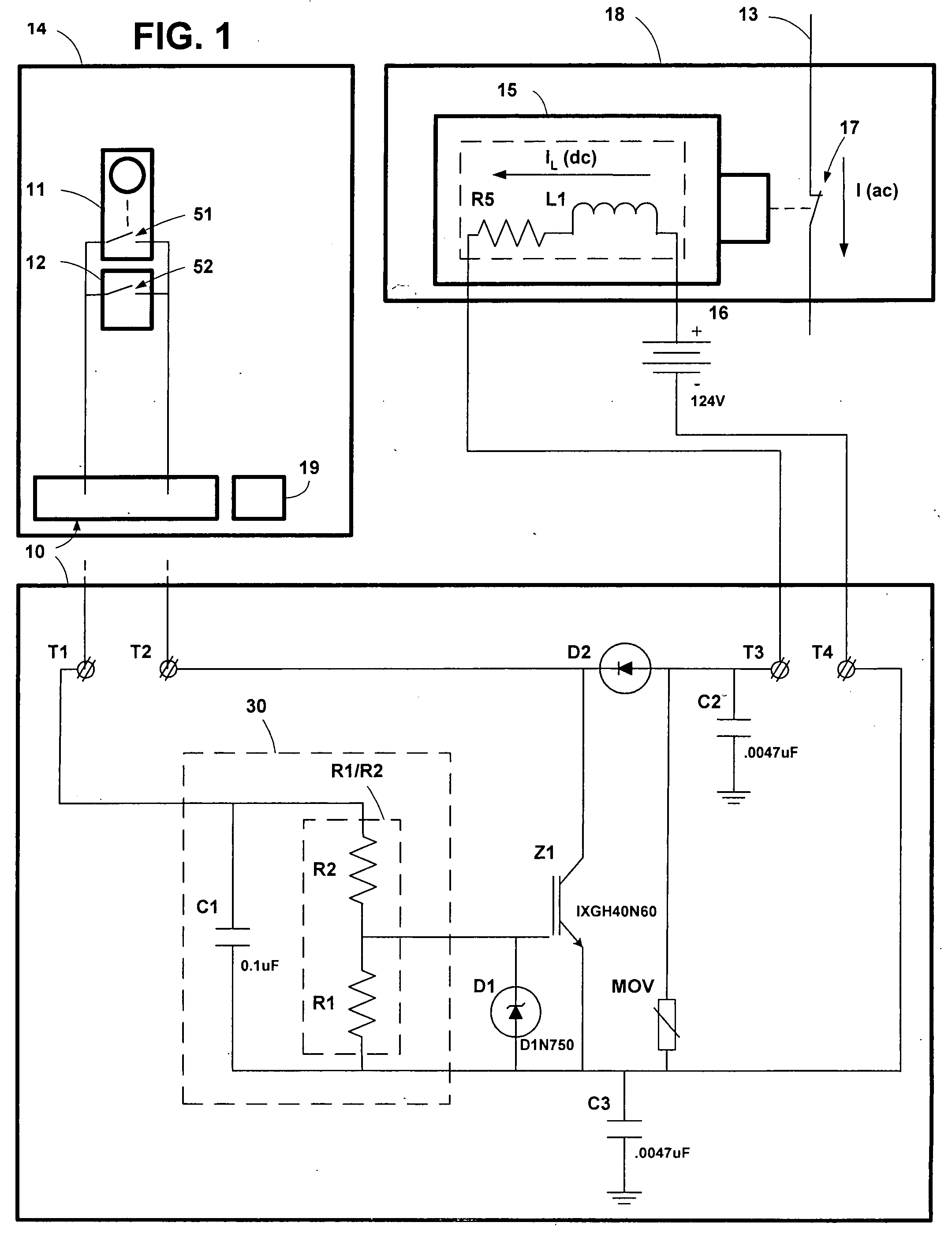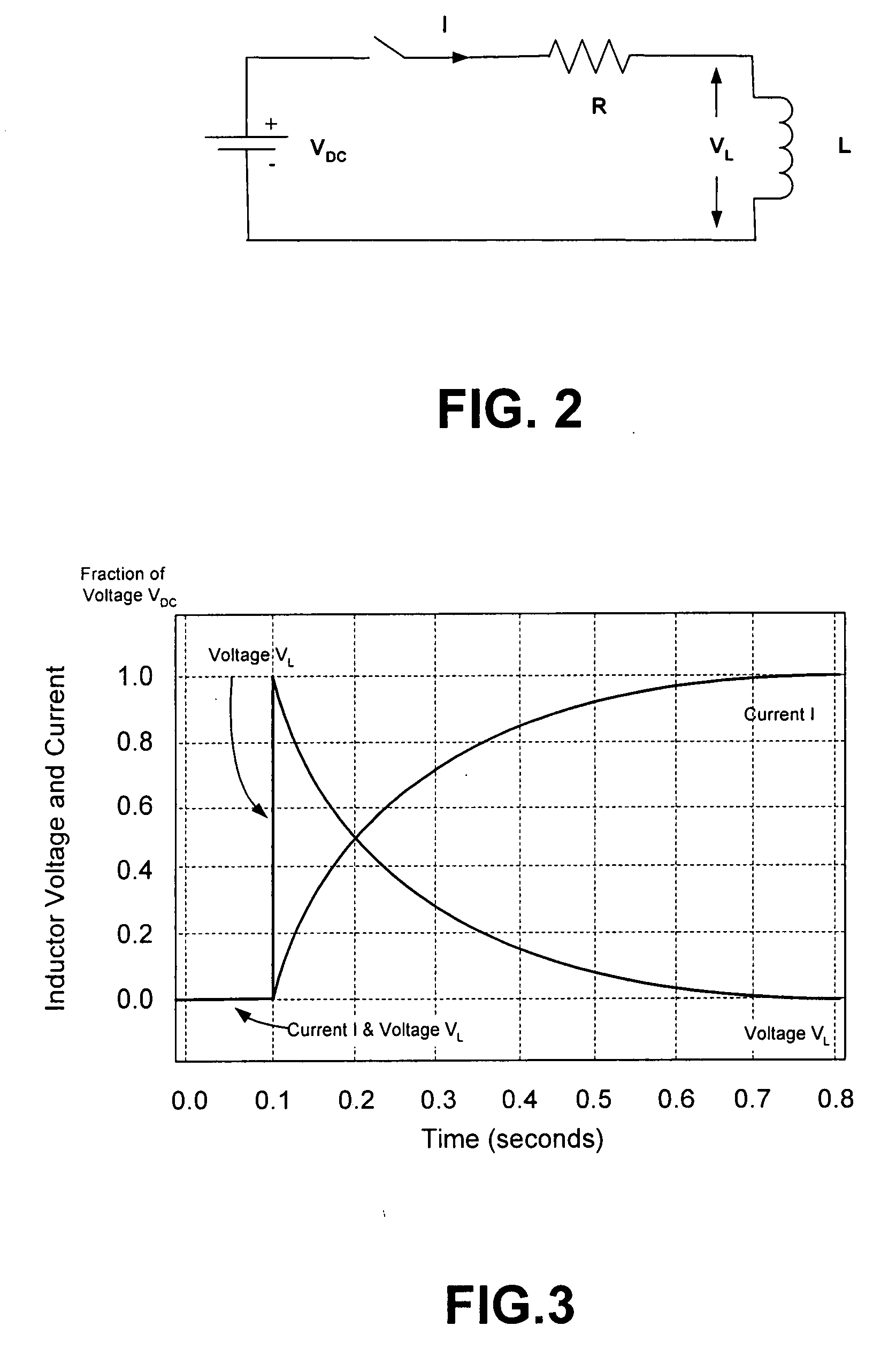Arc suppression circuit using a semi-conductor switch
a semi-conductor switch and circuit technology, applied in the direction of circuit-breaking switches, circuit-breaking switches for excess current, circuit-breaking switch details, etc., can solve the problems of well-known problems such as undesirable arcing
- Summary
- Abstract
- Description
- Claims
- Application Information
AI Technical Summary
Benefits of technology
Problems solved by technology
Method used
Image
Examples
second embodiment
2) Second Embodiment of the Invention
[0051]FIG. 5 is a circuit diagram showing a second embodiment of the arc suppression circuit of the present invention.
[0052]In this second embodiment, the arc suppression circuit provides a semi-conductor switch configured to accept control signals from a microprocessor within the protection relay. The microprocessor controls the timing of the switching on of the semi-conductor switch. The microprocessor turns the switch on before the contacts begin to open, thereby providing a current path around the contacts before the contacts begin to open. The semi-conductor switch is turned off after a predetermined time, a time sufficient to prevent an arc from becoming established. In a preferred mode, the predefined time is determined by the microprocessor. In an alternative mode, the predefined time is determined by the time constant of a resistance and the parasitic capacitance of the semi-conductor switch.
[0053]Referring to FIG. 5, arc suppression cir...
PUM
 Login to View More
Login to View More Abstract
Description
Claims
Application Information
 Login to View More
Login to View More - R&D
- Intellectual Property
- Life Sciences
- Materials
- Tech Scout
- Unparalleled Data Quality
- Higher Quality Content
- 60% Fewer Hallucinations
Browse by: Latest US Patents, China's latest patents, Technical Efficacy Thesaurus, Application Domain, Technology Topic, Popular Technical Reports.
© 2025 PatSnap. All rights reserved.Legal|Privacy policy|Modern Slavery Act Transparency Statement|Sitemap|About US| Contact US: help@patsnap.com



